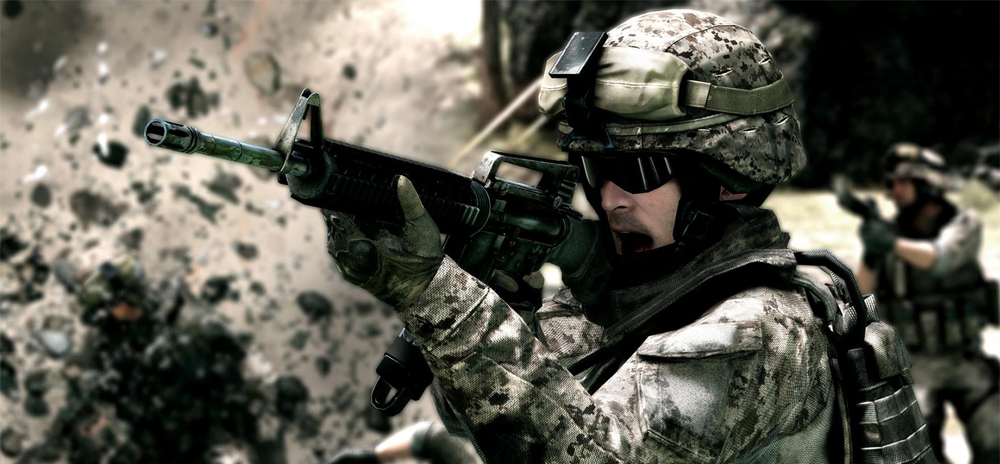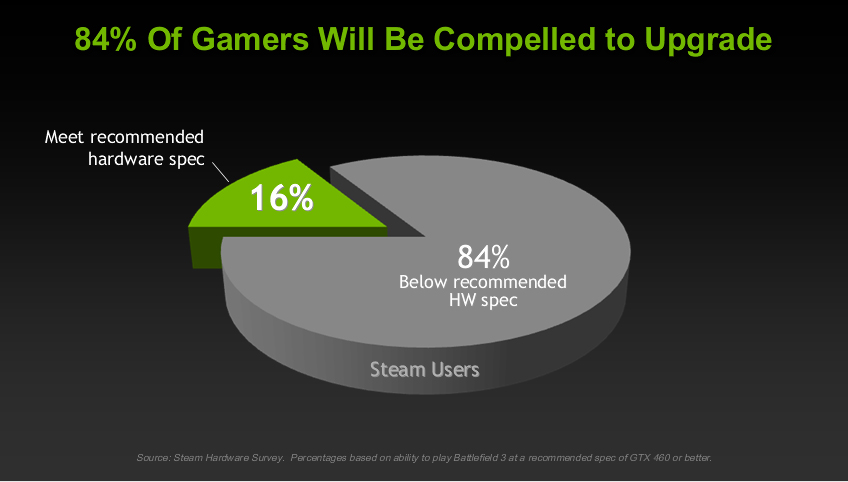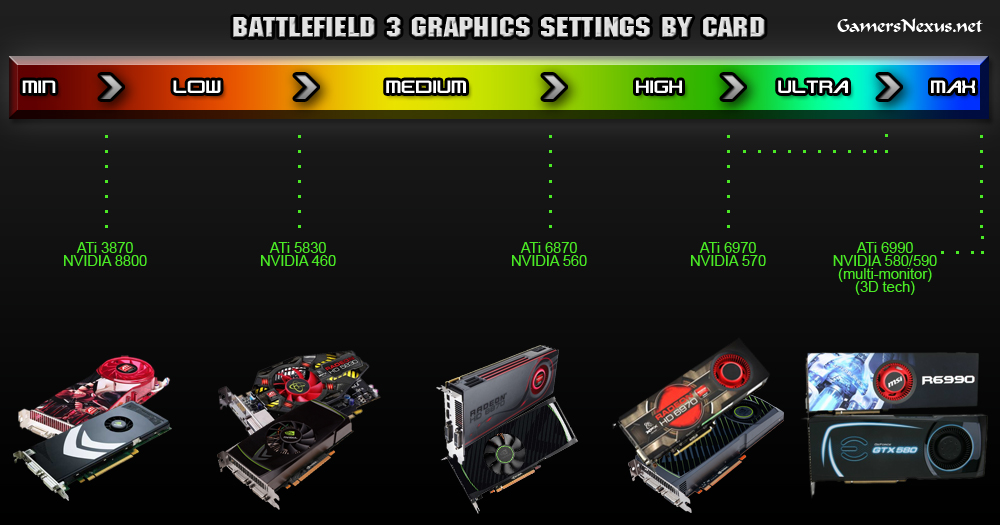If you saw our post last week about the rapidly expanding PC market, then you no doubt understand the large influence that PC gamers have over the future of video gaming. This dominance is empowered by our stellar $550 budget gaming PC build list, which has made it possible to enter into the realm of PC gaming without breaking the bank. One of the biggest questions in the comments for all of our builds lately has been simple: "Will it play Battlefield 3 on max settings?" or "Will my PC play Battlefield 3?"
From what we've learned through Steam's hardware survey, a stunning 84% of PC gamers currently do not meet the recommended specifications to play Battlefield 3 (DICE suggests that a GTX 460 or ATi 5830 is the lowest recommended card). Don't fret: these aren't absolute requirements, so you can still play it with an NVIDIA or ATi card that is lower than the recommendation; however, if you're focused on getting the best graphics quality, this may be of particular interest to you.
The representatives we've spoken with over the course of the last week have used the same phrase to describe the impact this will have on the PC market: "It's the Crysis Effect" seemed to be the standard answer. Yes -- the very same that Crysis did for PC gaming back when the 8800 was the dominant card is what, increasingly so, it seems Battlefield 3 will do for the 2011/2012 video hardware advancements. The 'Crysis Effect,' for those who may not wholly remember, is classified as a surge in graphics processing unit sales and research, yielding more powerful units and compelling gamers to upgrade to newer, more powerful cards (and with the upcoming 1000% gain in video processing power, we're not surprised).
So, what will your performance be with different cards? Our hardware experts -- the very same who bring you our PC build lists each month -- working with information we obtained from NVIDIA's Tom Peterson, have broken it down for you below; we started with high-end cards as we suspect many of you will be upgrading soon:
GTX 580/AMD 6990: You will be able to play at maximum settings and possibly even be able to support multi-monitor setups (though may require reduced shaders or AA).
GTX 570/AMD 6970: You can play at near-max, if not max, settings but will not easily support multi-monitor or 3D effects without decreasing quality.
GTX 560/AMD 6870: You will need to reduce anti-aliasing and ambient occlusion; you may need to reduce shaders on large servers.
GTX 460/AMD 5830: You will need to massively reduce anti-aliasing and may need to disable soft shadows, bloom, or other atmospheric effects.
GTX 8800/AMD 3870: You will need to reduce or disable the following options: atmospheric bloom, atmospheric smoke, high-dynamic range lighting, soft shadows, ambient occlusion, anti-aliasing, and motion blur.
If you want to play with 3D Vision (we reviewed it here) or other 3D technology and still maintain ultra (or near-max) settings, it will likely require 2xGTX 580s to maintain your quality. Other factors, such as multi-monitor setups, may call for more powerful cards, like the 590.
If you're itching for more Battlefield 3 in the mean time, check out our analysis of the Fault Line videos. If you're worried that your PC won't play it on the settings you desire, why not check out some of our advice on our forums or $550 and $744 PC builds? We've answered a lot of these questions already, but please feel free to post your graphics questions below!


